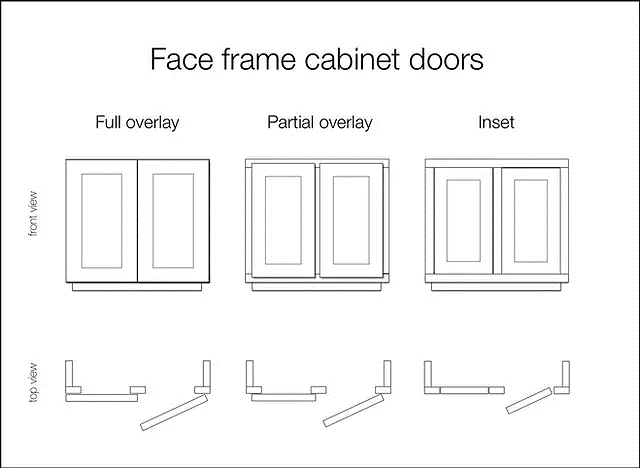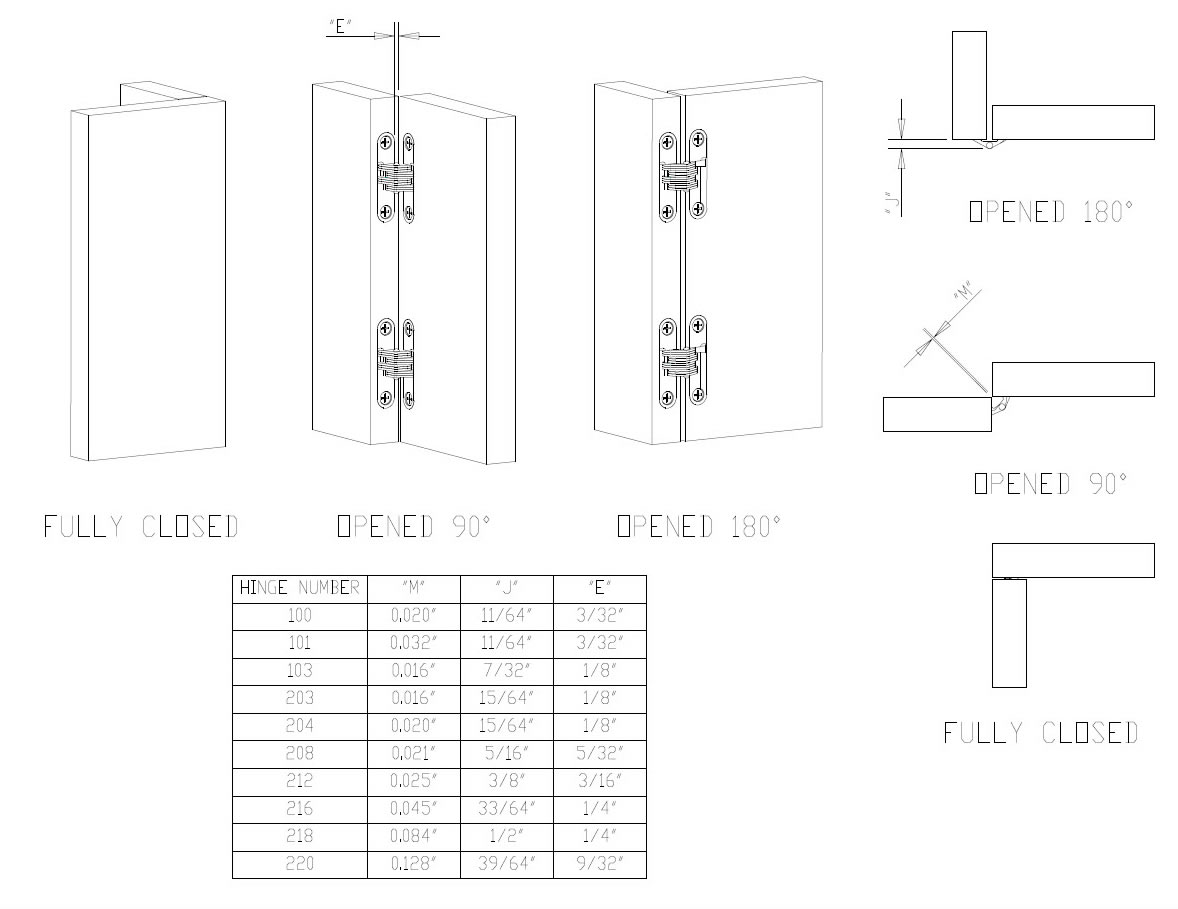Concealed door hinges have become a staple in modern interior design. These clever devices have changed the way doors function and appear, so you get options that are quieter and more aesthetically pleasing.
In this blog post, SOSS hinges will dive into the world of concealed door hinges. Whether you’re planning a home renovation or just curious about the latest trends in door hardware, this guide is for you. You’ll learn about:
- What Are Concealed Hinges?
- Types of Concealed Hinges
- Types by Closing Mechanism
- Benefits of Concealed Door Hinges
- Measurement Considerations for Concealed Door Hinges
- Final Thoughts
- FAQs
What Are Concealed Hinges?
As the name implies, this type of hinge is hidden from view. Traditional hinges are visible and installed on visible sections of a door. On the other hand, concealed hinges are installed inside the door or cabinet frame, creating a seamless and minimalist appearance.
These hinges also operate discreetly, leaving no interruptions to the clean lines of your doors or cabinets. When the door is closed, all you see is the smooth surface, allowing the beauty of the wood or material to take center stage. This minimalist approach to door hardware has become a hallmark of contemporary interior design.
Thanks to these features, many interior designers and homeowners favor concealed door hinges for their clean and unobtrusive appearance. By eliminating visible hardware, concealed hinges create a sense of continuity and elegance, so you can elevate the overall look of any space.
Types of Concealed Hinges
Concealed hinges are not a one-size-fits-all solution. They come in various types to cater to different door configurations and design preferences. Understanding the different types of concealed hinges will help you choose the perfect hardware for your specific needs.
European Hinges
European hinges are named for their popularity in Europe, but these are also widely used in North America. This type of concealed hinge offers a high degree of adjustability. You can fine-tune the position of the door in terms of height, depth, and side-to-side alignment. The weakness is that these hinges have different parts that can come loose and require repeated tightening to make the cabinet doors swing correctly. In addition, they are more prone to bending due to their design. These hinges will generally not have the same life expectancy of solid construction hinges, such as our SOSS hinges which utilize stacked metal plates in their design and never need adjusting.
SOSS Invisible Hinges
Our engineered invisible hinges work similarly to European ones but have a more solid construction and never need adjusting. We’ve constructed them to remain hidden completely when the doors are closed. When the door is open, you’ll see the flawless engineering that enables our hinges to resist even the heaviest loads. These can be used on two types of cabinet styles — half-overlay or partial concealed hinges and inset concealed hinges.

- Half Overlay Concealed Hinge: For those who prefer a balanced blend of aesthetics and functionality, half overlay concealed hinges are the answer. These hinges are designed for doors that partially overlap the cabinet frame when closed. The result is a modest gap or reveal between the door and the frame, adding a subtle visual interest to your cabinets. Half overlay hinges are versatile and work well in various applications, offering a compromise between full overlay and inset styles.
- Inset Concealed Hinge: Inset concealed hinge design is the best choice when you desire a minimalist and contemporary look. This setting is specially created for inset cabinet doors, where the door is flush with the cabinet frame when closed. In other words, there is no overlay. This creates a striking visual effect, highlighting the craftsmanship of your cabinetry and emphasizing clean lines. Inset concealed hinges are often used in high-end kitchen designs, as they contribute to a sleek and sophisticated appearance.

Types by Closing Mechanism
Concealed hinges also offer various closing mechanisms that enhance their functionality and user experience. These closing mechanisms are designed to control the way doors close, adding convenience, safety, and a touch of luxury to your living spaces. Here are the standard closing types.
Self-Close Hinges
Self-close concealed hinges are a game-changer when it comes to ensuring that your doors and cabinets stay closed securely. These hinges are equipped with a mechanism that automatically pulls the door closed when it’s within a few inches of the closed position. This feature prevents cabinet doors from inadvertently being left ajar. For this reason, self-closing hinges are especially valuable in busy areas like kitchens. Self-close hinges contribute to tidiness and help maintain the integrity of your stored items.
Soft-Close Hinges
If you’ve ever winced at the sound of a cabinet door slamming shut, soft-close concealed hinges are here to bring tranquility to your space. These hinges are engineered with a damping mechanism that gently slows down the closing process as the door approaches the closed position. The result is a smooth and controlled closing motion, preventing doors from making loud noises or causing vibrations. Soft-close hinges are a popular choice for homeowners seeking a more peaceful environment, particularly in shared living spaces.
Free Swing Hinges
Free swing concealed hinges provide the ultimate in convenience and ease of use. Traditional hinges require manual force to open and close, but free swing hinges enable doors to move effortlessly with minimal effort. These hinges are commonly used in commercial spaces, where frequent access is required. It’s also popular in homes where accessibility is a priority. With free swing hinges, you can effortlessly open and close doors. This feature makes them the perfect choice for individuals with mobility challenges.
Benefits of Concealed Door Hinges
These hidden integrations offer a wide range of benefits that contribute to the overall appeal and practicality of your doors and cabinets. Here are some benefits you can expect.
Aesthetics
One of the most noticeable benefits of concealed door hinges is their ability to enhance the aesthetics of your living spaces. When installed, these hinges are hidden from view, leaving no visible hardware on the exterior of the door. This creates a clean, uncluttered appearance. Concealed hinges create this minimalist look that is particularly favored in modern and contemporary interior design.
Better Security
Concealed hinges offer improved security compared to traditional exposed hinges. Since these hinges are installed inside the door and frame, they are less accessible to potential intruders. This added security can be especially crucial for exterior doors or cabinets storing valuable items. Concealed hinges also contribute to peace of mind. You know that your doors and cabinets are better protected against unauthorized access.
Versatile Applications
Concealed hinges are incredibly versatile and suitable for a wide range of applications. Whether you’re upgrading kitchen cabinets, bathroom vanities, wardrobe doors, or interior room doors, concealed hinges can accommodate your needs. Their adaptability extends to various door configurations, making them a versatile choice for diverse design preferences.
Measurement Considerations for Concealed Door Hinges
When selecting concealed door hinges for your project, precise measurements are crucial to ensure a seamless and functional installation. Overlooking these measurements can lead to misalignment, difficulty in operation, or damage to your doors and cabinets. Here are the key measurement considerations for concealed door hinges.
- Door Gap: The door gap is the space between the door and the cabinet frame when the door is closed. It’s essential to measure this gap accurately to determine the appropriate type of concealed hinge you’ll need.
- Thickness of Mounting Plate: The mounting plate is the part of the hinge that attaches to the cabinet frame. Its thickness is crucial because it must match the thickness of the door to ensure a secure and stable fit. Measure the thickness of both the door and the mounting plate to ensure compatibility.
- Hinge Crank or Angle: The hinge crank or angle determines how far the door will open and at what angle. Choose the correct hinge crank to match your specific needs and the available space.
- Door Weight and Size: Consider the weight and size of the door when selecting concealed hinges. Different hinge models are designed to support various door weights and sizes. Exceeding the weight or size limit of a hinge can lead to poor performance, sagging doors, or even hinge failure. SOSS offers the Hercules hinge for large and heavy doors which allow you to use less hinges than our competitors.
Final Thoughts on Concealed Door Hinges
Whether you want a contemporary look, enhanced security, or simply a quieter home, concealed hinges can be the perfect solution. These offer both elegance and practicality for your interior spaces. If you’re ready to use this type of hinge, you may be feeling overwhelmed with the choices at first. To make the right decision, contact SOSS hinges. We offer quality concealed door hinges and provide guidance about the best types for your project.
FAQs
Can Concealed Hinges Be Used for Exterior Doors?
Concealed hinges are primarily for interior doors and cabinets. For exterior doors, we recommend heavy-duty hinges with additional weatherproofing features.
Do Concealed Hinges Require Special Tools for Installation?
Concealed hinges typically require specific jigs and drilling templates for precise installation. We advise you to buy the necessary tools or hire a professional for installation.
Can I Retrofit My Existing Doors With Concealed Hinges?
Retrofitting existing doors with concealed hinges can be challenging. It’s often more practical to use concealed hinges when installing new doors or cabinets.